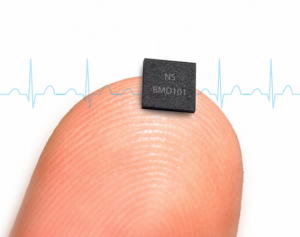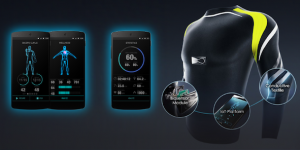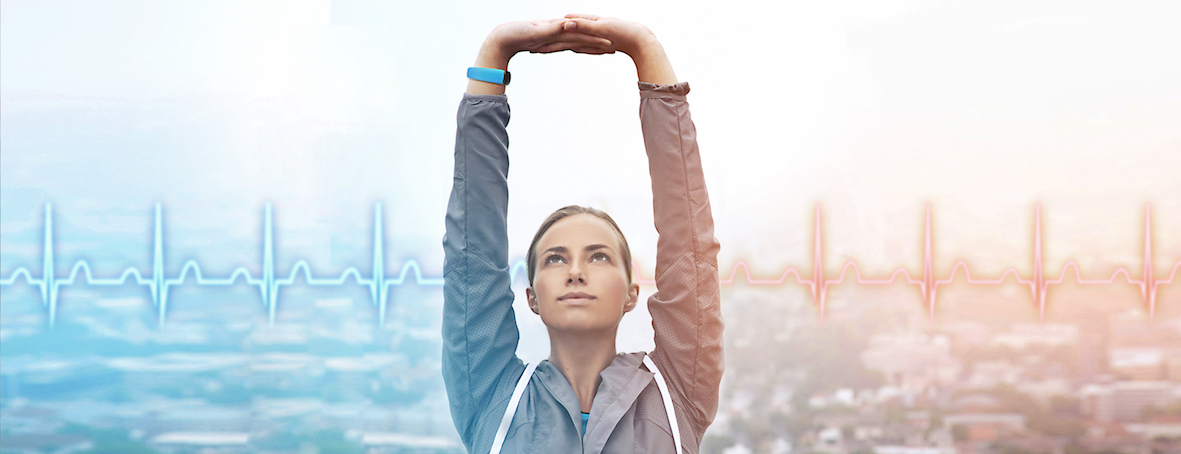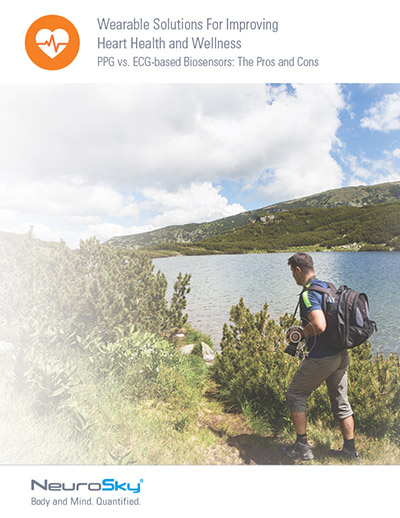Acute stress is not hard to detect—physical symptoms like sweating and shaking aside, your heart tends to beat heavily, quickly and consistently. The amount of time between each beat is reduced, getting to the point where it feels like your heart may pump right out of your chest. This is typically the way your body responds when you’re in an extremely stressful or fearful situation.
While acute stress is easy to detect, chronic stress isn’t. For marathon runners, physical influences may tire the body or cause the body to experience chronic stress. Chronic stress can be brought on by a variety of factors, including ove rexertion and demanding training schedules. If a runner recognizes their body is strained and they need an alternative training routine, that’s easy to fix—the problem is, in the case of chronic stress, they may not realize there’s an issue before it’s too late. With scientific data and metrics such as HRV, marathon runners and their trainers can catch issues before they arise.
rexertion and demanding training schedules. If a runner recognizes their body is strained and they need an alternative training routine, that’s easy to fix—the problem is, in the case of chronic stress, they may not realize there’s an issue before it’s too late. With scientific data and metrics such as HRV, marathon runners and their trainers can catch issues before they arise.
For device manufacturers, there’s great opportunity to support athletes and their trainers in creating more effective training regimens. By integrating smart biosensor technology in wearable and mobile devices, manufacturers can provide the health and performance metrics marathon runners and their trainers need.
What is HRV?
Heart rate variability (HRV) is a metric that can identify if the body is experiencing stress, and allows people to alter their routines or behaviors based on this. HRV measures the variation in time between each heartbeat, or the change in beats per minute. Instinctively, we believe that the more consistent our heartbeat is, the better—but it’s quite the opposite. In the most healthy people, the interval of time between heartbeats varies naturally, producing higher HRV. When a person is in a stressful situation, the autonomic nervous system reacts with a fight-or-flight response, reducing variability in the interval between heartbeats. In other words, lower HRV is linked to high stress levels.
The average person can’t identify HRV immediately when they feel their stress level rising, but advanced biosensor technology is making it easy—you can determine your stress level in a matter of seconds with advanced biosensor technology in the form of wearable smart devices.
HRV in Marathon Training
HRV has been used for decades by medical professionals to diagnose patients or predict medical outcomes, but only in the last few years have we seen HRV become an important measurement for athletes training for a variety of sports—including biathlon, triathlon and marathon running. Measuring HRV can have an enormous impact on the efficiency of an athlete’s training sessions. Measuring HRV can advise coaches and trainers when an athlete’s regimen isn’t effectual—and when it’s actually overexerting their body and negatively affecting performance.
Top triathlon coaching duo Plews and Prof are known for administering data-driven training methods to their triathlon teams. Their strong belief is that measuring every aspect of training gives coaches and trainers data to work with, but the most important step involved in building data-driven routines is having a thorough understanding of what, how and why you’re focused on specific metrics. Plews and Profs identify HRV as one of their favorite metrics to consider when building regimens for their athletes.
How HRV Impacts Training Routines
HRV assists trainers and coaches in determining if progress is declining for an athlete or they’re overstretched. If an athlete is at a point where they’re experiencing higher HRV, a trainer may prescribe a more intense training session to drive more progress and higher performance. To contrast that, if an athlete is experiencing lower HRV, it’s an indication of stress and strain, and a trainer may prescribe an easier, lower-intensity training session. HRV not only allows the trainer to determine if an athlete is overtraining—it indicates at what points an athlete is more or less adaptive to training, which can help trainers predict an athlete’s performance and during what points an athlete is more likely to experience injury.
Many influences contribute to changing a marathon runner’s regimen. Genetics, life load, psychological health, and environmental stressors (like heat or altitude) all factor into altering a training routine—but trainers can also look at an athlete’s response to different types of training by monitoring HRV.
When training isn’t effective for an athlete, they’ll experience a drop in HRV. This change often occurs when trainers prescribe an athlete low intensity/high duration sessions, or unpolarized training. Overtraining rarely results in an athlete adapting to their regimen, so it’s important for trainers to identify when they’re overtraining an athlete and need to reconsider their prescribed sessions.
Should You Care About HRV?
Trainers and coaches are increasingly realizing how measuring and monitoring HRV can impact their team’s results. HRV may just be a number, but that number provides valuable insight into how to methodically monitor and adjust training regimens to produce higher performance and prevent injury.
Trainers and athletes alike seek portable, efficient solutions for capturing HRV data. Wearable device manufacturers have the opportunity to create innovative solutions to support trainers and their athletes by providing them with the copious benefits of HRV measurement.

Tracking HRV with ECG Biosensors & Algorithms
Tracking HRV data is now possible thanks to advanced biosensor technology. With NeuroSky’s ECG biosensors and biometric algorithms, you’re provided with an accurate HRV measurement in 30 seconds. ECG biosensors can be smoothly integrated into portable and wearable products, amplifying a well-designed wearable device by enabling it to track health and wellness metrics.
Marathon Runners and Trainers are Looking for Innovative Solutions
Data-driven techniques for athletic training are becoming more popular—coaches, marathon runners, and amateur athletes alike are interested in discovering ways to optimize their training and improve their stress levels. If you have a product idea for helping athletes measure their health and wellness metrics, and want to discover how to bring your smart device idea to life by incorporating ECG biosensors, get in touch with our experts and read our FREE whitepaper, Wearable Solutions for Improving Heart Health and Wellness.



